| The
Poor man's Photomacroscope (pt 9)
Photo Gallery and Conclusion By Paul James |
I've posted a few images captured over the modified Leitz Metallux photomacroscope which I hope conveys its potential. Some of the pertinent details have been lost or forgotten during this extensive period of adaptation, so the basic details I've included may be a little inaccurate in some cases, but they were all nevertheless captured on the Sony NEX 3's sensor.
I've slowly come to the conclusion that most camera lenses elicit very similar quality imaging when used as objectives with or without the appropriate converters. The subtle differences between lenses can be lost on the digital sensor, and any apparent superiority from one image to another can be modified by choice of subject matter or lighting variations. The eye's analysis of the live aerial image may be more acute, but I've often found that my perception of imagery changes in the course of time anyway, so what I considered was good imaging 6 months ago may not seem quite so impressive today, and visa versa.
The subjects in the following images have all been illuminated by 2 clustered LED lighting modules. The Sony Nex 3 camera body employed an M42 adapter which in turn is coupled to a Pentax 35mm film camera lens ( which I've found 'relays' the image from the 30mm x6.3 eyepiece more faithfully onto the camera's sensor than without it ). I always try to post process the imaging in a way that emulates the live view.
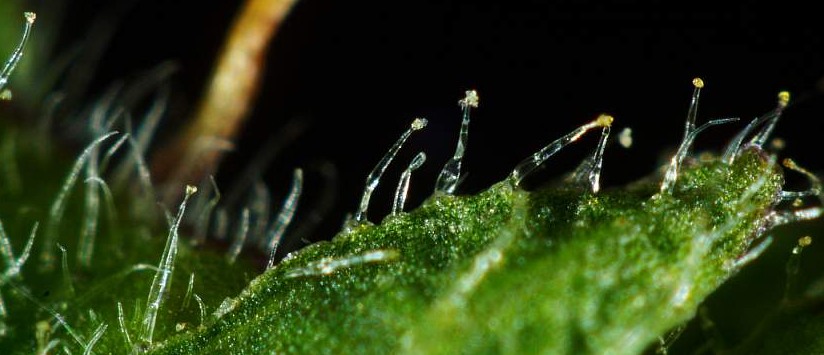 |
| (x70) Speedwell's sepal edge detail showing silica based 'hair' structures. (Olympus 40mm @ f5.0) |
.
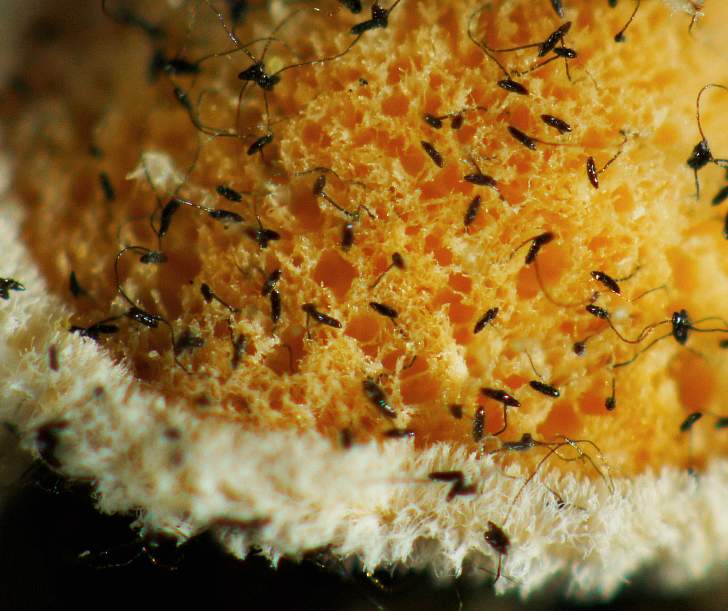 |
|
(x70) Image of wood fungus invasion by strange parasites. (Olympus Obj. 40mm @f3.4) |
.
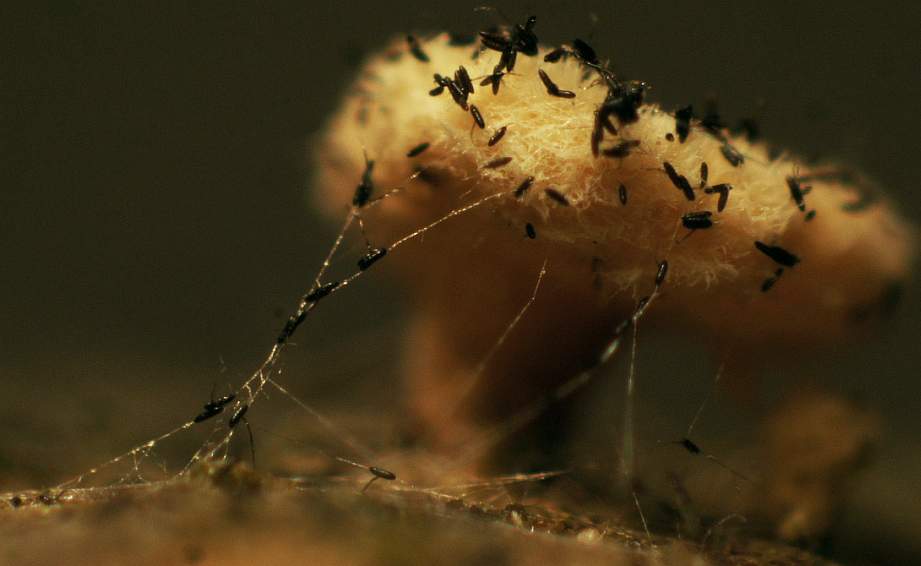 |
| (x70) As above but showing their ability to 'ski lift' along filaments despite their ungainly appendages. |
.
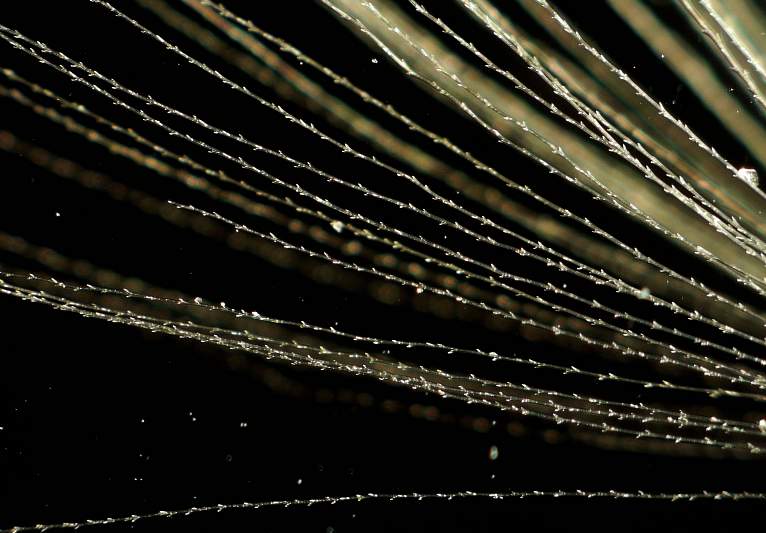 |
|
(x40) Zenith 58mm/converter. Filaments of Dandelion 'parachutes' displaying their sharp spikes |
.
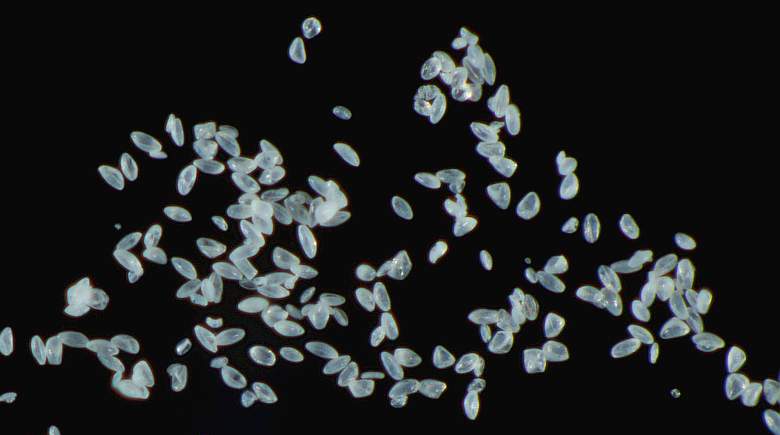 |
| (x140 ) Pollen from Speedwell. False
colour aberrations not obvious from the Olympus 40mm @
f6.
This is an unsized crop and demonstrates the quality of the Olympus document copying optic. |
.
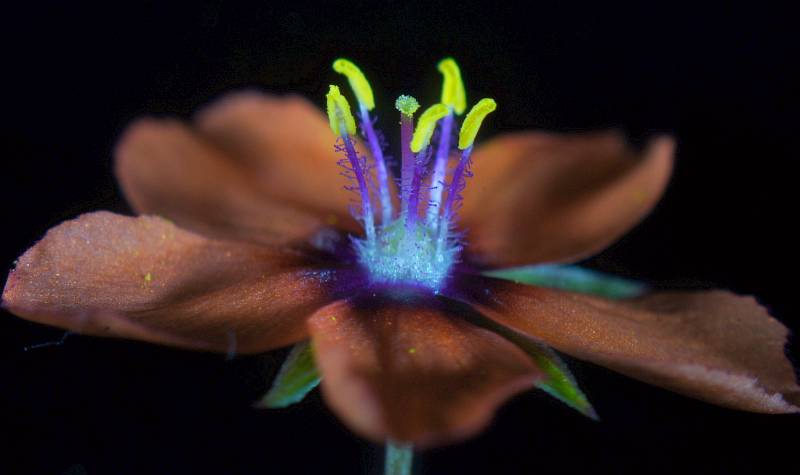 |
| (x20) Scarlet Pimpernel's reproductive parts highlighted by oblique LED lights. (Zenith 58mm/converter) |
.
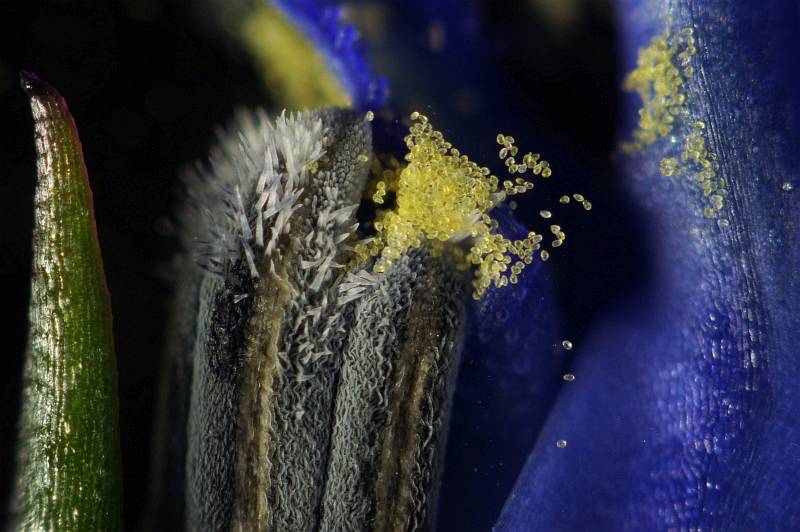 |
| (x55) Ruptured pollen sac/stigma of Lobelia (Olympus 40mm @ f 6.0) |
.
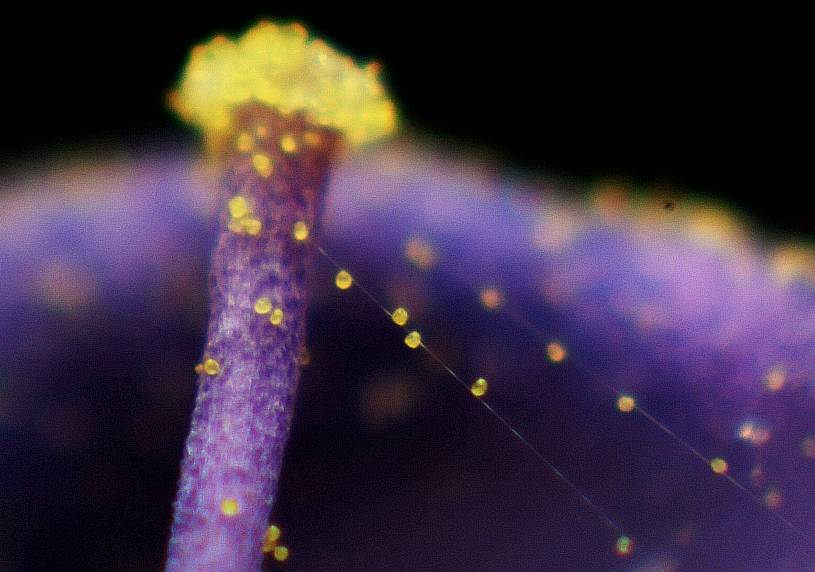 |
|
(x100) Pollen grains attached to super fine filament (Olympus 40mm @ f 3.4) |
Final Conclusive Comments
It's been a much longer journey toward my goal of adapting a stand to suit my purposes than I had originally imagined. There have been distractions too, but without doubt there have also been moments when pure luck played a significant part, and on more than one occasion I must admit. I now have a simple yet very reliable setup : the stand which is extremely sturdy and easy to manipulate, raises excellent visual imagery which is easily captured on the camera sensor. The Sony NEX camera body suites me fine in this role, but it would be the icing on the cake had it offered a measure of control over image processing, most especially with regard to image sharpening which I'd rather attend to later with the PC. But to be fair, the Sony NEX's in camera default sharpening isn't OTT at all..... thankfully.
The expectation of producing higher quality imagery with the Nikon D700 was soon deflated since its superiority is only very subtle in this role, which comes at a very high price compared to the Sony NEX body. Besides which I've found that dSLR's are not user friendly over the 'scope, and any superiority gained is invariably lost in the inevitable downsizing of imagery to fit the monitor anyway.
I've finally abandoned the idea of using a zoom camera objective as an imaging optic principally because a suitable example, which would equate to the standard of imagery raised from fixed focal length camera lenses, would cost a fortune.
It's been almost a year now since I first toyed with the general principle of making a photomacroscope. During this period I have become so used to binocular macro imaging and its inherent fidelity and complete lack of anomalies that are invariably found in stereoscopic optics, that I rarely ever employ the latter. Fact. The once imagined vision of owning a supremo professional photo-stereomacroscope has simply fizzled out. Ironically, my original perception of the Wild M400 series Photomakroskope many years ago was that its imagery wouldn't appeal simply because it was not stereoscopic. Now I can truly realise its inherent advantages even though I've never seen or used one. That aside, it seems that my original goal of creating a mock Wild M400 has been realised at last, with genuinely unexpected advantages.
| All comments welcome by the author Paul James |